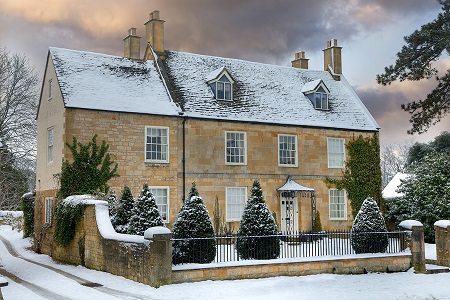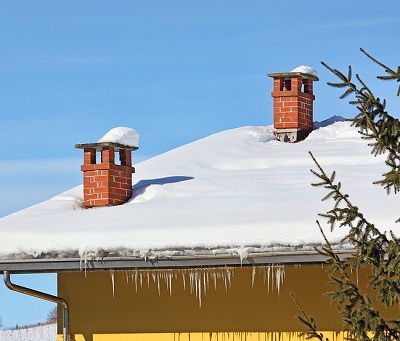Steps for Preparing your Home for Winter Pt2
 New York winters, as beautiful as they are, can be harsh. Enjoying the wintry weather is made possible with the right preparation. We’ve provided a list for you to help you get your fireplace, chimney, and home ready for the coming winter. See the first part of this two-part series and the following for steps that will get you ready for cold weather:
New York winters, as beautiful as they are, can be harsh. Enjoying the wintry weather is made possible with the right preparation. We’ve provided a list for you to help you get your fireplace, chimney, and home ready for the coming winter. See the first part of this two-part series and the following for steps that will get you ready for cold weather:
Protect those Pipes
When pipes freeze and burst, it’s a costly mess; but it’s an avoidable one. Be ready for that first freeze by protecting your plumbing pipes. There are different ways to cover your pipes, but nothing beats foam tubes. These handy tubes have a slit on one side. They are simple to cut to the needed length. Simply open the slid area and push the tube onto the pipe for effective insulation from freezing temperatures. Some slits have self-adhesive edges and others don’t. Simply use duct tape to secure the foam, for those that don’t have adhesion.
Plug Leaks
According to various studies, about 30% of the frigid outdoor temperatures that seep into your house get there through openings such as electrical conduits that run through floor, pipes, ceilings, walls, and vents. Insulating foam sealant does an excellent job of sealing those gaps and keeping the cold weather out. Also seal gaps around basement pipes and kitchen sinks. For small gaps, caulk can be useful and effective.
Check Fire Extinguishers
Be ready for emergencies by keeping a fire extinguisher handy, particularly if you use a fireplace or a wood stove. Familiarize everyone in the household with the extinguisher and how to use it. The proper use of a fire extinguisher can sometimes contain a small fire and keep it from becoming a major disaster.
Add Attic Insulation
Check your attic to be sure there are at least 12 inches of insulation. This is the minimum depth that experts recommend. Simply roll out additional insulation, as needed, and your home will stay warmer longer and help keep your utility costs down.
Prepare Emergency Kits
You can never tell when a serious winter storm will result in loss of power. It’s also impossible to predict when ice or some other winter mishap will leave you stranded in your car in a snow storm. Be prepared by packing the following emergency kit that takes into account needs for every member of your household:
- A cellphone charger that works in your car.
- Battery-powered or hand-crank flashlight and radio.
- Extra batteries
- Road salt or a good substitute, such as cat litter
- Shovels
- A sleeping bag for each person in the household
- Food, keeping in mind whatever means you have for preparing it
- Water
- Keep extra mittens, scarves, and blankets in the car
- First aid items
- Medications
- During winter, always keep at least a half tank of gas in your car
- Cash
Switch Ceiling Fans to Reverse
 Ceiling fans can be as helpful in winter as they are in summer. Simply reverse the blade direction so that the blades push the rising warm air back to the living area, where it can be of benefit. When the blades turn clockwise, they push the air down; when blades rotate in a counter-clockwise direction, the room stays cooler. If you have high ceilings, fans can actually enable you to remain comfortable even while adjusting the thermostat an extra degree or two, saving even more on your utility bill.
Ceiling fans can be as helpful in winter as they are in summer. Simply reverse the blade direction so that the blades push the rising warm air back to the living area, where it can be of benefit. When the blades turn clockwise, they push the air down; when blades rotate in a counter-clockwise direction, the room stays cooler. If you have high ceilings, fans can actually enable you to remain comfortable even while adjusting the thermostat an extra degree or two, saving even more on your utility bill.
Schedule a Chimney Inspection and Cleaning
The National Fire Prevention Association is recognized as the authority on fire safety, and the association recommends that a chimney and fireplace be inspected annually and cleaned as needed. If a chimney is in disrepair, it can be unsafe to operate it. One of the dangers prevented by maintaining your chimney is a buildup of creosote that can result in a dangerous chimney fire.








